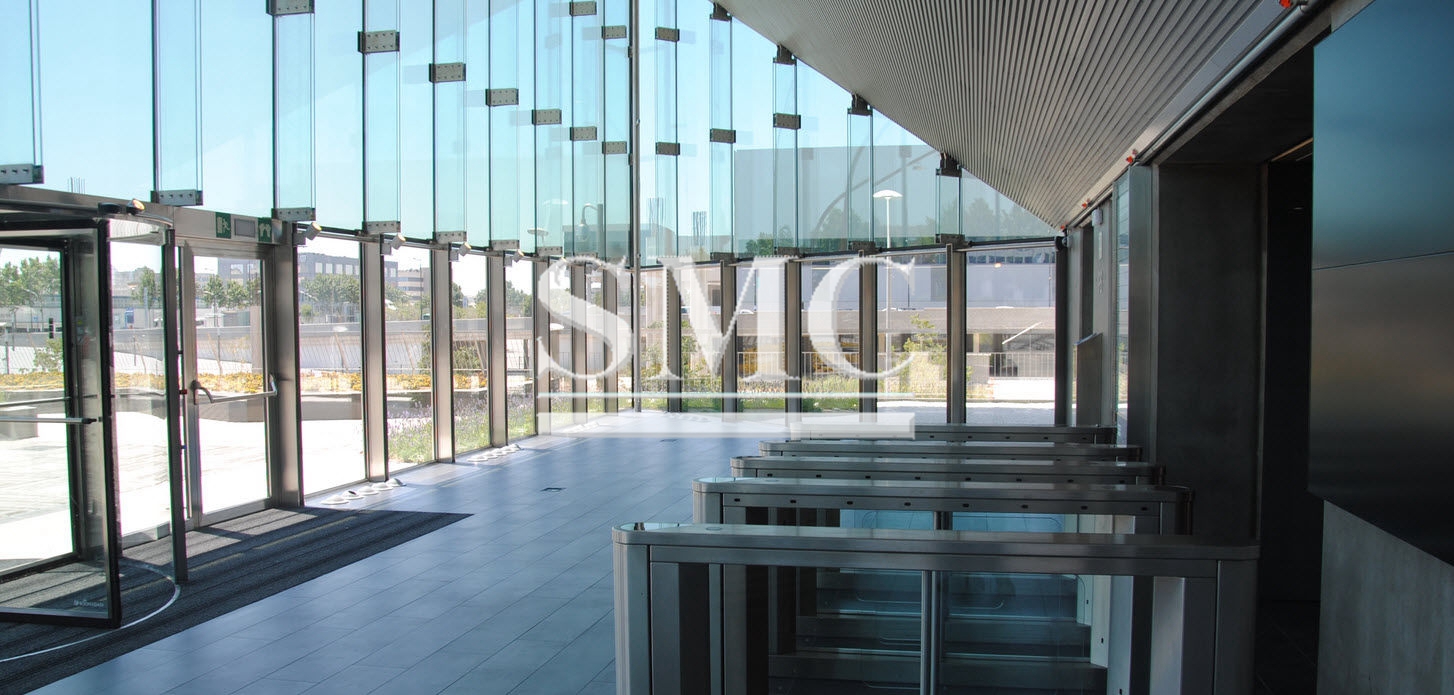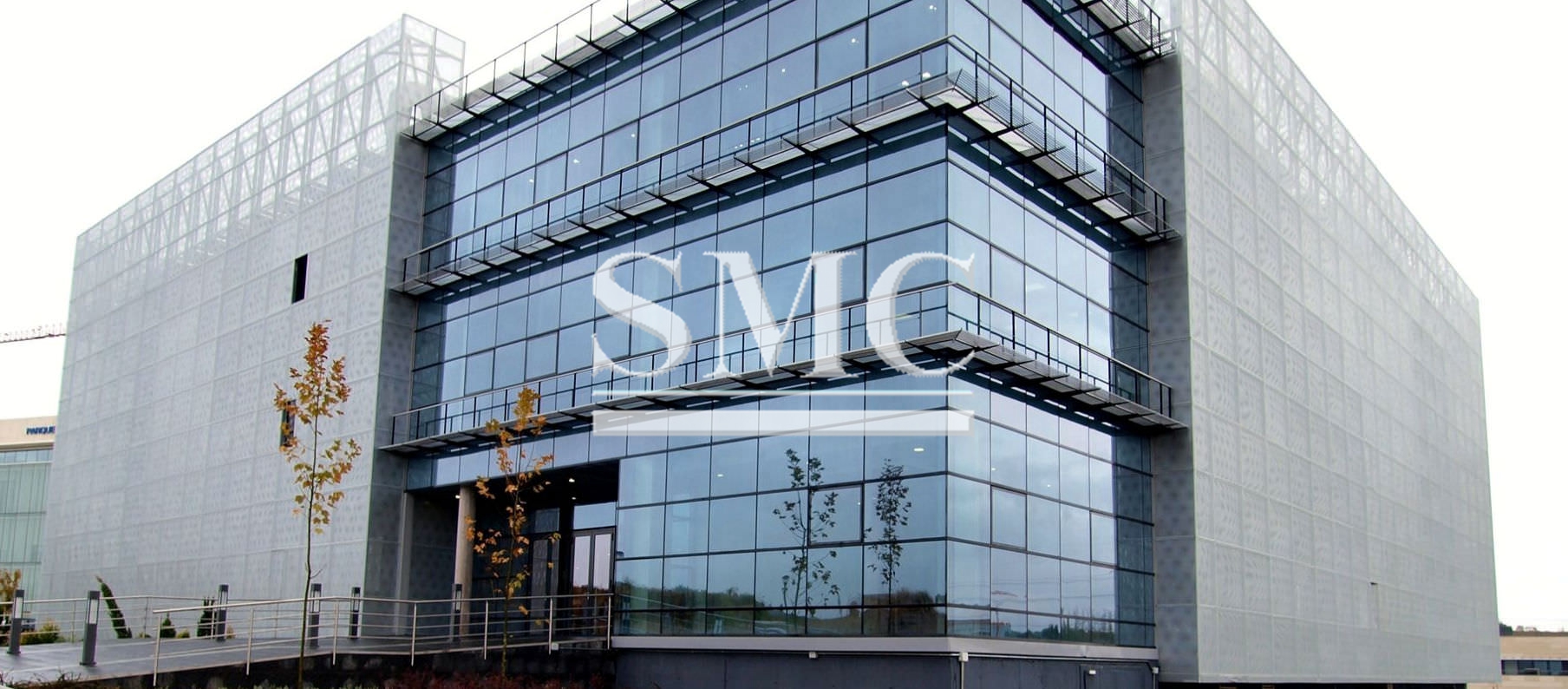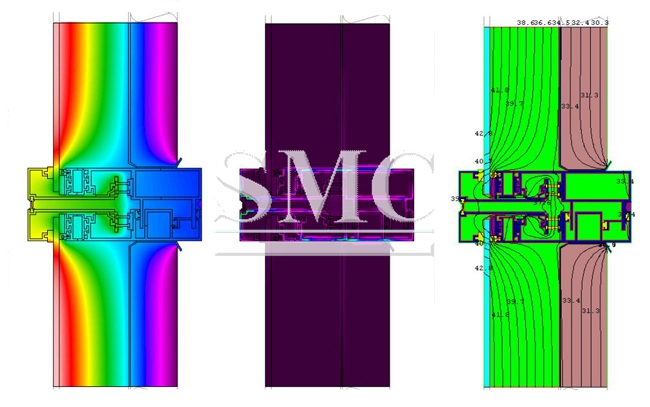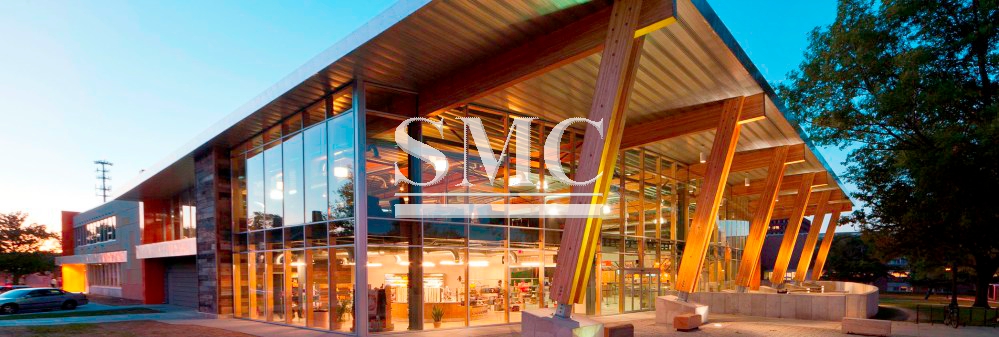A curtain wall is defined as thin, usually aluminum-framed wall, containing in-fills of glass, metal panels, or thin stone. The framing is attached to the building structure and does not carry the floor or roof loads of the building.
The wind and gravity heaps of the drapery divider are exchanged to the building structure, normally at the floor line. Aluminum surrounded divider frameworks go back to the 1930’s, and grown quickly after World War II when the supply of aluminum got to be accessible for non-military use.
Curtain wall systems range from manufacturer’s standard catalog systems to specialized custom walls. Custom walls become cost competitive with standard systems as the wall area increases. This area joins remarks about standard and custom frameworks. It is prescribed that specialists be procured with mastery in custom window ornament divider plan for ventures that consolidate these frameworks.

Description
The following are brief descriptions of commonly used curtain wall farming methods and components.
Curtain walls can be classified by their method of fabrication and installation into the following general categories: stick systems and unitized (also known as modular) systems.
In the stick system, the curtain wall frame (mullions) and glass or opaque panels are installed and connected together piece by piece. In the unitized system, the curtain wall is composed of large units that are assembled and glazed in the factory, shipped to the site and erected on the building. Vertical and horizontal mullions of the modules mate together with the adjoining modules.
Modules are generally constructed one story tall and one module wide but may incorporate multiple modules. Typical units are five to six feet wide.
Curtain walls can also be classified as water managed or pressure-equalized systems.
Both the unitized and stick-manufactured frameworks are intended to be either inside or outside coated frameworks. Inside and outside coated frameworks offer diverse focal points and burdens. Inside coated frameworks consider glass or obscure board establishment into the shade divider openings from the inside of the building.

Points of interest are not accommodated inside coated frameworks since air penetration is a worry with inside coated frameworks. Inside coated frameworks are normally indicated for applications with constrained inside checks to permit satisfactory access to the inside of the drapery divider. For low rise construction with easy access to the building, outside glazing is typically specified.
For high-rise construction interior glazing is sometimes used due to access and logistics of replacing glass from a swing stage.
In exterior glazed systems, glass and opaque panels are installed from the exterior of the curtain wall. Exterior glazed systems require swing stage or scaffolding access to the exterior of the curtain wall for repair or replacement. Some curtain wall systems can be glazed from either the interior or exterior.
Typical opaque panels include opacified spandrel glass, metal panels, thin stone, and other materials, such as terra cotta or FRP (fiber-reinforced plastic).
Vision glass is predominantly insulating glass and may have one or both lites laminated , usually fixed but sometimes glazed into operable window frames that are incorporated into the curtain wall framing.
Spandrel glass can be monolithic, laminated, or insulating glass. The spandrel glass can be made opaque through the use of opacifiers (film/paint or ceramic frit) applied on an unexposed surface or through “shadow box” construction, i.e., providing an enclosed space behind clear spandrel glass. Shadow box construction creates a perception of depth behind the spandrel glass that is sometimes desired.
Metal panels can take various forms including aluminum plate, stainless steel or other non-corrosive metal, thin composite panels consisting of two thin aluminum sheets sandwiching a thin plastic interlayer, or panels consisting of metal sheets bonded to rigid insulation, with or without an inner metal sheet to create a sandwich panel.
Thin stone panels are most commonly granite. White marble should not be used due to its susceptibility to deformation due to hysteresis (thin stone is not covered in this chapter).
The curtain wall often comprises one part of a building’s wall system. Careful integration with adjacent elements such as other wall claddings, roofs, and base of wall details is required for a successful installation.
Fundamentals
System Types
Face-sealed, water-managed and pressure-equalized rainscreen systems are the three systems that are available. Normally, pressure-equalized rain screen systems provide the highest levels of resistance to air and water infiltration, with water-managed systems the next most reliable.
Weight balanced downpour screen frameworks capacity by obstructing the greater part of the strengths that can drive water over a hindrance.
As identified with drapery divider frameworks, PE downpour screen frameworks plan within face of glass and within face of the coating pocket and the interconnecting gasket or wet seal as an impenetrable boundary. The outside face of glass, outside coating materials and the external uncovered face of aluminum surrounding capacity as a downpour screen, shedding water away.

Between the outside downpour screen and the inside air hindrance a weight leveling chamber is shaped in the coating pocket, which serves to diminish water infiltration by disposing of (balancing) the weight distinction over the downpour screen that tends to drive water into the framework. Minor measures of water that may enter the framework are weeped innocuously to the outside.
Water-managed systems appear similar at first glance, incorporating drains and weeps from the glazing pocket, but no effort is made to create an air barrier or “zone-glaze” each glass or spandrel unit, and therefore a larger amount of water is forced into the system and must be weeped away. Also, since no air barrier exists, the pressure differential between the glazing pocket and the interior may be strong enough to force water vertically higher than interior gaskets, resulting in leaks.
Weep holes in a water-managed system function largely to drain water that enters the glazing pocket while weep holes in a pressure-equalized system function primarily as vents to allow air movement between the exterior and glazing pocket. Weeping of water is only a secondary function. Note that the easiest way to recognize a pressure-equalized rain screen system is yo note that the that glazing pocket around each individual unit of glass is isolated air tight from adjacent units, most obviously with plugs or seals at the gaps between screw spines at mullion intersections. Detailing of spandrels, shadow boxes and interface with adjacent construction must maintain the continuity of the air barrier and rainscreen to function properly with a pressure-equalized rainscreen curtain wall framing system.
Some aluminum curtain wall systems are still designed as face-sealed barrier walls. They depend on continuous and perfect seals between the glass units and the frame and between all frame members to perform. The long-term reliability of such seals is extremely suspect and such systems should be avoided.
Thermal Performance (Conduction, Solar Radiation, Thermal Break, Comfort)
Overall curtain wall thermal performance is a function of the glazing infill panel, the frame, construction behind opaque (spandrel and column cover) areas, and the perimeter details.
Curtain wall frame conductance is a function of the frame material, geometry and fabrication (e.g. thermal break).
Aluminum has a high warm conductivity. It is basic practice to consolidate warm breaks of low conductivity materials, generally PVC, Neoprene elastic, polyurethane and all the more as of late polyester-fortified nylon, for enhanced warm execution.
Some “poured and debridged” polyurethane warm breaks psychologist and anxiety frames in the warm break when the outside aluminum moves uniquely in contrast to the inside aluminum because of temperature contrasts.
Move down mechanical connection of the two parts of the edge is prescribed (e.g. skip debridging or “t-in-a container”). A genuine warm break is ¼” thick least and can be up to 1″ or more, with the polyester strengthened nylon assortment. Some drape divider frameworks join separators that are not exactly ¼”, making them “thermally moved forward”. The more profound warm breaks can enhance warm execution and buildup resistance of the framework.
Some curtain wall systems utilize “pressure bars” (also referred to as “pressure plates”) that are fastened to the outside of the mullions to retain the glass. These systems frequently include gaskets that are placed between the pressure bar and mullions and function as thermal breaks and help with acoustic isolation. These systems require special care in design and construction to ensure continuity of the gaskets at horizontal and vertical transitions. Gaskets are also used to cushion the glass on the interior and exterior faces of the glass. The problem with gaskets is that they tend to be stretched during installation and will shrink back to their original length in a short time; they will also shrink with age and exposure to ultraviolet radiation. There is usually a gap in the gasket at the corners after shrinkage occurs. With a properly designed system the water that enters the system at the gasket corners will weep out through the snap cover weep holes. To mitigate shrinkage of gaskets back from the corners the use of vulcanized corners and diagonally cut splices are recommended.
Thermal performance of opaque areas of the curtain wall is a function of insulation and air/vapor barriers. Due to the lack of interior air adjacent to opaque curtain wall areas, these areas are subject to wide swings in temperature and humidity and require careful detailing of insulation and air/vapor barriers to minimize condensation. Some curtain wall systems include condensation drainage provisions, such as condensate gutters, that are intended to collect and weep condensate from spandrel areas to the exterior; such condensate gutters and weeps are a violation of the air barrier of the curtain wall unless they are outboard of the backpan. See discussion of back pans below.

At the curtain wall perimeter, maintaining continuity of the air barrier reduces airflows around the curtain wall. Integration of perimeter flashings helps ensure watertight performance of the curtain wall and its connection to adjacent wall elements. Proper placement of insulation at the curtain wall perimeter reduces energy loss and potential condensation issues. Insulating the mullions in a spandrel area may lead to excessive condensation in cold climates unless it can also be assured that humid air from the interior will never come in contact with the mullions. The spandrel area is typically not heated, thus the interior environment does not warm the mullions and offset the migration of the cold temperatures deep into the wall. In the vision area the interior heat helps to mitigate the cold and prevents condensation. For this reason, do not insulate between the interior portion of mullions and adjacent wall construction either.
Moisture Protection
Water penetration resistance is a function of glazing details , frame construction and drainage details, weather-stripping and frame gaskets, interior sealants , and perimeter flashings and seals. Water can enter the exterior wall system by means of five different forces: gravity, kinetic energy, air pressure difference, surface tension, and capillary action. To mitigate water infiltration, all of these forces must be accounted for in the system design.
Unlike discontinuous windows, which are smaller units and can rely to a high degree on sill flashings to capture frame corner leakage, curtain walls cover large expanses of wall without sill flashings at each glazed opening. Water penetration of curtain wall frame corners is likely to leak to the interior and/or onto insulating glass below. Watertight frame corner construction and good glazing pocket drainage are critical for reliable water penetration resistance.
Visual
Key visual features of curtain walls are glazing appearance and sightlines. Sightlines are defined as the visual profile of the vertical and horizontal mullions. The sightlines are a function of both the width and depth of the curtain wall frame. Lateral load resistance requirements (wind loads, spans) generally dictate frame depth. Where narrow sightlines are desired, steel stiffeners inserted into the hollow frame of aluminum extrusions can help reduce frame depth.
Sound
The acoustic performance of curtain walls is primarily a function of the glazing and internal seals to stop air leakage (covered elsewhere). The sound attenuation capability of curtain walls can be improved by installing sound attenuating infill and by making construction as airtight as possible. Incorporating different thicknesses of glass in an insulated glass unit will also help to mitigate exterior noise. This can be accomplished by increasing the thickness of one of the lites of glass or by incorporating a laminated layer of glass with a noise-reducing interlayer, typically a polyvinyl butyral or PVB.
Back Pans
Back pans are metal sheets, usually aluminum or galvanized steel, that are attached and sealed to the curtain wall framing around the perimeter behind opaque areas of a curtain wall. In cold climates insulation should be installed between the back pan and the exterior cladding in order to maintain the dew point outboard of the back pan so that the back pan acts as an air and vapor barrier. Back pans provide a second line of defense against water infiltration for areas of the curtain wall that are not visible from the interior and are difficult to access. Water infiltration in opaque areas can continue for extended periods of time causing significant damage before being detected. Back pans also are to be preferred over foil vapor retarders in high performance and humidified buildings as convection currents short-circuiting the insulation can cause condensation, wetting and ultimately failure of these spandrel areas.
Shadow Boxes
Shadow box construction creates the appearance of depth behind a transparent lite of glass by incorporating a metal sheet into the curtain wall behind the lite. The metal sheet should be at least two inches behind the glass and may be painted or formed to create a texture, but reflective surfaces add the most visual depth to the wall.
Insulation should also be installed behind the shadow box if interior finishes prevent room air from contacting this area.

The system should be designed to collect any condensation that may collect on the exterior side of the metal sheet and drain it back to the exterior. Shadow boxes present a variety of challenges related to venting the cavity behind the glass, that can allow dirt on surfaces difficult to clean, or sealing the cavity and risking excessive heat build-up. Either way, the cavity may be at temperatures significantly above or below interior conditions with only thermally conductive aluminum between them.
This can lead to condensation or surfaces so hot they can burn. Careful detailing can provide a method to thermally isolate the cavity from the interior. An interior back pan behind the insulation is desirable as well, to avoid condensation on the metal shadow box from the interior.
Support of Curtain Walls
Curtain wall systems must transfer back to floor structure or intermediate framing both their own dead load plus any live loads, which consist primarily of positive and negative wind loads but might also include a snow load applied to large horizontal areas, seismic loads, maintenance loads and others. Unfortunately, the curtain wall will likely demonstrate movement caused by thermal changes and wind significantly different than movement of the building structure. Therefore the connections to anchor the curtain wall must be designed to allow differential movement while resisting the loads applied.
In stick-framed aluminum curtain wall, vertical mullions commonly run past two floors, with a combined gravity/lateral anchor at one floor and a lateral anchor only at the other. The splice between the vertical mullions will also be designed to allow vertical movement while providing lateral resistance. In large areas of stick framed curtain wall, a split vertical mullion will be introduced periodically to allow thermal movement. Note that this movement slightly distorts the anchors at the vertical mullions. Individual units of glass must accommodate the movement of the surrounding aluminum frame by sliding along glazing gaskets, distorting the gaskets or a combination of both. The movement of the glass within the frame and the movement forced in the anchors tend to induce additional stresses into a stick framed system.
Unitized curtain wall systems accommodate the differential movement between the structure and the thermal movement of the frame at the joints between each curtain wall unit. Because these units are frequently custom designed, the amount of movement to be accommodated can be carefully engineered into the system. Anchoring of unitized curtain wall typically consists of a proprietary assembly with three-way dimensional adjustability. The anchors occur at each pair of vertical mullions along the edge of slab or spandrel beam. Frequently, unitized systems span from a horizontal stack joint located at approximately desk height up to the anchor at the floor line above and then cantilevering past the floor to the next horizontal stack joint. The stack joint is designed to resist lateral loads while the two floor anchors resist gravity and lateral loads. One of the two floor anchors will allow movement in plane with the unitized system.
Safety
Fire safing and smoke seal at gaps between the floor slab-edge and the back of the curtain wall are essential to compartmentalize between floors and slow down the passage of fire and combustion gases between floors. A substantial ½” thick minimum poured smoke-seal is required to separate air return and supply plenums from each other, and for infection control in hospitals. Laboratory-tested fire rated assemblies may be required in unsprinklered buildings by some codes as Perimeter Fire Containment Systems when the floor assemblies are required to be fire-resistance rated. The ratings of the Perimeter Fire Containment System must be equal to or greater than the floor rating. These systems provide confidence that the materials used for perimeter containment remain in place for the specified duration of the required rating in a fire event.
Fireman knock-out glazing panels are often required for venting and emergency access from the exterior. Knock-out panels are generally fully tempered glass to allow full fracturing of the panel into small pieces and relatively safe removal from the opening. Knock-out panels are identified by a non-removable reflective dot (typically two inches in diameter) located in the lower corner of the glass and visible from the ground by the fire department.
Falling Ice and Snow
Buildings in cold climates have struggled throughout the ages with ice and snow formations that slide, fall, or get windblown from their roofs, ledges, and window sills, causing harm to people and damage to property below.
Maintenance Access
The curtain wall should be designed for accessibility for maintenance. Low-rise buildings can generally be accessed from the ground using equipment with articulated arms. For high rise construction the building should be designed for swing stage access for window cleaning, general maintenance, and repair work, like glass replacement. Davits and fall arrest safety tieback anchors should be provided on the roof and stabilization tie-offs provided on the face of the wall to comply with OSHA standards CFR 1910.66, CFR 1910.28 and ANSI/IWCA I-14.1 “Window Cleaning Safety Standard”.
Health and Indoor Air Quality
Curtain wall leakage, both air and water, can contribute to IAQ problems by supplying liquid water and condensation moisture for mold growth. This leakage can often remain concealed within the wall system and not become evident until concealed wall components experience significant deterioration and mold growth, requiring costly repairs.
Durability and Service Life Expectancy
Common curtain wall durability problems include the following:
Glazing failures
Glazing problems specific to curtain wall construction include visual obstruction from condensation or dirt, damage to opacifier films from material degradation, condensation and/or heat build-up, and IGU issues/laminated glass issues.
Failure of internal gaskets and sealants from curtain wall movements (thermal, structural), prolonged exposure to water (good drainage features reduce this risk), heat/sun/UV degradation (age). Repairs (if feasible) require significant disassembly of curtain wall. If restoration of internal seals is not physically possible or not economically feasible, installation of exterior surface wet sealing at all glazing and frame joints is often performed.
Failure of exposed gaskets and sealants, including perimeter sealants, from curtain wall movements, environmental degradation. Repairs require exterior access.
Aluminum frames are inherently corrosion resistant in many environments if anodized and properly sealed or painted with baked-on fluoropolymer paint. Aluminum frames are subject to deterioration of the coating and corrosion of aluminum in severe environments and galvanic corrosion from contact with dissimilar metals. Frame corner seals constructed using sealant are prone to debonding from prolonged contact with moisture and from thermal, structural, and transportation movements.
Maintainability and Reparability
Curtain walls and perimeter sealants require maintenance to maximize the service life of the curtain walls. Perimeter sealants, properly designed and installed, have a typical service life of 10 to 15 years although breaches are likely from day one. Removal and replacement of perimeter sealants requires meticulous surface preparation and proper detailing.
Aluminum frames are generally painted or anodized. Factory applied fluoropolymer thermoset coatings have good resistance to environmental degradation and require only periodic cleaning. Recoating with an air-dry fluoropolymer coating is possible but requires special surface preparation and is not as durable as the baked-on original coating.
Anodized aluminum frames cannot be “re-anodized” in place, but can be cleaned and protected by proprietary clear coatings to improve appearance and durability.
Exposed glazing seals and gaskets require inspection and maintenance to minimize water penetration, limit exposure of frame seals, and protect insulating glass seals from wetting.
Sustainability
The best strategy for sustainability of curtain walls is to employ good design practices to ensure the durability (maximum service life) of the installation and to use systems that have a good thermal break and high R-value (values as high as R-7 are possible with triple-glazed systems). Also, the use of low-e and spectrally selective glass coatings can significantly reduce energy loads and improve comfort close to the wall.
Aluminum and steel frames are typically recycled at the end of their service life. Salvage and demolition contractors generally require a minimum of 1,000 sq ft or more of window/curtain wall to make material recycling economical (smaller amounts are generally disposed as general trash). Recycling is less economical if the aluminum is contaminated with sealants, fractured glazing, etc., as salvage companies pay considerably less for the material. There is a limited market for salvaged steel and wood frames.
Shanghai Metal Corporation is a trusted aluminum alloy, aluminum foil price, stainless steel price and stainless steel manufacturer, kinds of stainless steel in china.
Guest contributors are welcome at the Alloy Wiki.It is a weekly wiki and guide on alloy information and processing technology, while also about the vast array of opportunities that are present in manufacturing. Our team of writers consists of a Machining Material Supplier / Machinist / Tool and Die Maker, a Biomedical Engineer / Product Development Engineer, a Job Development Coordinator / Adjunct Professor, and a President and CEO of a manufacturing facility.
Link to this article:Everything you have to know about curtain walls
Reprint Statement: If there are no special instructions, all articles on this site are original. Please indicate the source for reprinting:Alloy Wiki,thanks!^^


